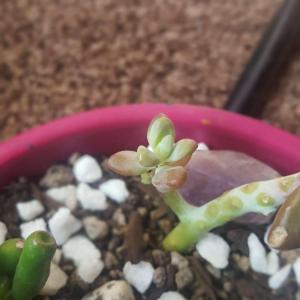文章
Dummer. ゛☀
2017年09月15日

Found on tomato and potato plants, late blight is caused by the fungus Phytophthora infestans and is common throughout the United States. True to its name, the disease occurs later in the growing season with symptoms often not appearing until after blossom.
Late blight first appears on the lower, older leaves as water-soaked, gray-green spots. As the disease matures, these spots darken and a white fungal growth forms on the undersides. Eventually the entire plant will become infected. Crops can be severely damaged.
Unlike other fungal diseases, this plant problem does not overwinter in the soil or on garden trash. Instead the spores are introduced by infected tubers, transplants or seeds. Wind will also carry the disease from nearby gardens. Warm temperatures (70-80˚F) and wet, humid conditions promote its rapid spread.
Note: Late Blight was responsible for the Irish potato famine (1845-1849).
Treatment
Plant resistant cultivars when available.
Remove volunteers from the garden prior to planting and space plants far enough apart to allow for plenty of air circulation.
Water in the early morning hours, or use soaker hoses, to give plants time to dry out during the day — avoid overhead irrigation.
Destroy all tomato and potato debris after harvest (see Fall Garden Cleanup).
If disease symptoms are observed, treat plants with one of the following fungicides:
Apply a copper based fungicide (2 oz/ gallon of water) every 7 days or less, following heavy rain or when the amount of disease is increasing rapidly. If possible, time applications so that at least 12 hours of dry weather follows application.
Used as a foliar spray, Organocide® Plant Doctor will work its way through the entire plant to prevent fungal problems from occurring and attack existing many problems. Mix 2 tsp/ gallon of water and spray at transplant or when direct seeded crops are at 2-4 true leaf, then at 1-2 week intervals as required to control disease.
Safely treat fungal problems with SERENADE Garden. This broad spectrum bio-fungicide uses a patented strain of Bacillus subtilis and is approved for organic use. Best of all, SERENADE is completely non-toxic to honey bees and beneficial insects.
Monterey® All Natural Disease Control is a ready-to-use blend of naturally occurring ingredients that control most plant foliar diseases. All stages of the disease is controlled, but applying before infestation gives the best results.

Late blight first appears on the lower, older leaves as water-soaked, gray-green spots. As the disease matures, these spots darken and a white fungal growth forms on the undersides. Eventually the entire plant will become infected. Crops can be severely damaged.
Unlike other fungal diseases, this plant problem does not overwinter in the soil or on garden trash. Instead the spores are introduced by infected tubers, transplants or seeds. Wind will also carry the disease from nearby gardens. Warm temperatures (70-80˚F) and wet, humid conditions promote its rapid spread.

Note: Late Blight was responsible for the Irish potato famine (1845-1849).
Treatment
Plant resistant cultivars when available.
Remove volunteers from the garden prior to planting and space plants far enough apart to allow for plenty of air circulation.
Water in the early morning hours, or use soaker hoses, to give plants time to dry out during the day — avoid overhead irrigation.
Destroy all tomato and potato debris after harvest (see Fall Garden Cleanup).

If disease symptoms are observed, treat plants with one of the following fungicides:
Apply a copper based fungicide (2 oz/ gallon of water) every 7 days or less, following heavy rain or when the amount of disease is increasing rapidly. If possible, time applications so that at least 12 hours of dry weather follows application.
Used as a foliar spray, Organocide® Plant Doctor will work its way through the entire plant to prevent fungal problems from occurring and attack existing many problems. Mix 2 tsp/ gallon of water and spray at transplant or when direct seeded crops are at 2-4 true leaf, then at 1-2 week intervals as required to control disease.

Safely treat fungal problems with SERENADE Garden. This broad spectrum bio-fungicide uses a patented strain of Bacillus subtilis and is approved for organic use. Best of all, SERENADE is completely non-toxic to honey bees and beneficial insects.
Monterey® All Natural Disease Control is a ready-to-use blend of naturally occurring ingredients that control most plant foliar diseases. All stages of the disease is controlled, but applying before infestation gives the best results.
0
0
Ashtyn Emily Wright
2017年09月14日

Just lifting my Aloe Aristata leaves to give them a little water & I've noticed 3 tiny babies growing on my smaller plant! Very happy he's doing so well 🤗🌱






0
0
文章
Dummer. ゛☀
2017年09月14日

Many species of flea beetles are found throughout the United States. They are small jumping insects (similar in appearance to fleas) commonly found in home gardens early in the growing season. A voracious pest, they will damage plants by chewing numerous small holes in the leaves, which make them look as if they have been peppered by fine buckshot. When populations are high, flea beetles can quickly defoliate and kill entire plants. They feed most on hot sunny days and attack a wide variety of plants including beans, cabbage, corn, eggplant, potatoes, peppers, tomatoes, lettuce and most seedlings.
Adults are small (1/10 inch long), shiny, dark brown or black beetles with large hind legs that allow them to jump when disturbed. Some species may have white or yellow stripes on their wing cases. Larvae are small, cream-colored worms (1/8 – 1/3 inch long). They live underground and feed on the roots and tubers of young plants as well as on germinating seeds.
Note: Flea beetles transmit viral and bacterial diseases.
Life Cycle
Adults overwinter in the soil or garden debris and become active in the spring, feeding on host plants as new growth appears. Tiny white eggs are laid on or in soil cracks around the base of plants. These hatch in about one week, and the slender white larvae feed on plant roots for approximately 2-3 weeks. Pupae usually remain in the soil for 7-9 days until adults emerge and the cycle is completed. There are one to four generations per year, depending on species and climate.
Flea Beetle Control
Remove garden trash and plow or roto-till under weeds to reduce overwintering sites.
Floating row covers are extremely effective when placed on seedlings and left in place until plants are old enough to tolerate beetle damage.
Place yellow sticky traps throughout garden rows every 15 to 30 feet to capture adults.
Beneficial nematodes applied to the soil will destroy the larval stage, reducing root feeding and helping to prevent the next generation of adults from emerging.
Apply food-grade Diatomaceous Earth for long-lasting protection. Made up of tiny fossilized aquatic organisms, that look like broken glass under the microscope, DE kills by scoring an insect’s outer layer as it crawls over the fine powder. Contains NO toxic poisons!
Surround WP (kaolin clay) forms a protective barrier film, which acts as a broad spectrum crop protectant for preventing damage from insect pests.
Azatrol EC contains azadirachtin, the key insecticidal ingredient found in neem oil. This concentrated product is approved for organic use and offers multiple modes of action, making it virtually impossible for insect resistance to develop. Best of all, it’s non-toxic to honey bees and many other beneficial insects.
Least-toxic botanical insecticides should be used as a last resort. Derived from plants which have insecticidal properties, these natural pesticides have fewer harmful side effects than synthetic chemicals and break down more quickly in the environment.
Adults are small (1/10 inch long), shiny, dark brown or black beetles with large hind legs that allow them to jump when disturbed. Some species may have white or yellow stripes on their wing cases. Larvae are small, cream-colored worms (1/8 – 1/3 inch long). They live underground and feed on the roots and tubers of young plants as well as on germinating seeds.

Note: Flea beetles transmit viral and bacterial diseases.
Life Cycle
Adults overwinter in the soil or garden debris and become active in the spring, feeding on host plants as new growth appears. Tiny white eggs are laid on or in soil cracks around the base of plants. These hatch in about one week, and the slender white larvae feed on plant roots for approximately 2-3 weeks. Pupae usually remain in the soil for 7-9 days until adults emerge and the cycle is completed. There are one to four generations per year, depending on species and climate.

Flea Beetle Control
Remove garden trash and plow or roto-till under weeds to reduce overwintering sites.
Floating row covers are extremely effective when placed on seedlings and left in place until plants are old enough to tolerate beetle damage.
Place yellow sticky traps throughout garden rows every 15 to 30 feet to capture adults.
Beneficial nematodes applied to the soil will destroy the larval stage, reducing root feeding and helping to prevent the next generation of adults from emerging.

Apply food-grade Diatomaceous Earth for long-lasting protection. Made up of tiny fossilized aquatic organisms, that look like broken glass under the microscope, DE kills by scoring an insect’s outer layer as it crawls over the fine powder. Contains NO toxic poisons!
Surround WP (kaolin clay) forms a protective barrier film, which acts as a broad spectrum crop protectant for preventing damage from insect pests.
Azatrol EC contains azadirachtin, the key insecticidal ingredient found in neem oil. This concentrated product is approved for organic use and offers multiple modes of action, making it virtually impossible for insect resistance to develop. Best of all, it’s non-toxic to honey bees and many other beneficial insects.

Least-toxic botanical insecticides should be used as a last resort. Derived from plants which have insecticidal properties, these natural pesticides have fewer harmful side effects than synthetic chemicals and break down more quickly in the environment.
0
0
文章
Dummer. ゛☀
2017年09月14日

Infection by dollar spot (Sclerotinia homeocarp) appears as tan or straw-colored spots ranging in size from a quarter to that of a silver dollar sunken in the turf. Occasionally, small cottony strings of the fungus can be seen growing from the diseased leaf blades.
Dollar spot occurs throughout the growing period, and is most active during moist, warm days and cool nights. As the disease progresses, individual spots may join to destroy large patches of lawn. It occurs widely on golf greens, but may also be a severe problem on lawns growing under dry soil conditions.
Turf damage is usually more severe if there is a deficiency of nitrogen. Disease fungi are spread from one area to another by water, wind, mowers, other equipment or shoes.
Treatment
The following organic fungicides are recommended:
Bonide® Liquid Copper is a natural formulation used to protect everything from turf to vegetables, to flowers and fruits. Mix 1.5 to 6 oz with 2.5 gallons of water and apply to 1,000 sq. ft. For best results, start 2 weeks before problems normally occur. Repeat at 7 to 10 day intervals for as long as needed.
Physan 20 works on a variety of disease outbreaks affecting lawns, turf and grass. Add 1 Tbsp per gallon of water and spray over problem areas, repeat as needed. One pint treats 6,400 square feet.
Practices that promote a healthy lawn will help to reduce the occurrence of this fungal disease. For example:
Cut grass at the recommended maximum height.
Try not to remove more than 1/3 of the leaf surface in any one mowing, and if possible, wash the mower between cuttings with a 10% bleach solution.
Remove excess thatch and aerate compacted soils.
Improve drainage by top-dressing with organic matter such as organic compost or well-aged animal manure.
Keep lawns well watered, but avoid irrigating in the late afternoon or evening — do NOT over water.
Apply a slow-release organic fertilizer high in nitrogen; applying liquid seaweed and chelated iron is also helpful.
Do NOT over fertilize, since this can result in an increase of other turf grass diseases such as brown patch.
Over seed in the fall with resistant turf cultivars.

Dollar spot occurs throughout the growing period, and is most active during moist, warm days and cool nights. As the disease progresses, individual spots may join to destroy large patches of lawn. It occurs widely on golf greens, but may also be a severe problem on lawns growing under dry soil conditions.
Turf damage is usually more severe if there is a deficiency of nitrogen. Disease fungi are spread from one area to another by water, wind, mowers, other equipment or shoes.

Treatment
The following organic fungicides are recommended:
Bonide® Liquid Copper is a natural formulation used to protect everything from turf to vegetables, to flowers and fruits. Mix 1.5 to 6 oz with 2.5 gallons of water and apply to 1,000 sq. ft. For best results, start 2 weeks before problems normally occur. Repeat at 7 to 10 day intervals for as long as needed.
Physan 20 works on a variety of disease outbreaks affecting lawns, turf and grass. Add 1 Tbsp per gallon of water and spray over problem areas, repeat as needed. One pint treats 6,400 square feet.

Practices that promote a healthy lawn will help to reduce the occurrence of this fungal disease. For example:
Cut grass at the recommended maximum height.
Try not to remove more than 1/3 of the leaf surface in any one mowing, and if possible, wash the mower between cuttings with a 10% bleach solution.
Remove excess thatch and aerate compacted soils.
Improve drainage by top-dressing with organic matter such as organic compost or well-aged animal manure.
Keep lawns well watered, but avoid irrigating in the late afternoon or evening — do NOT over water.

Apply a slow-release organic fertilizer high in nitrogen; applying liquid seaweed and chelated iron is also helpful.
Do NOT over fertilize, since this can result in an increase of other turf grass diseases such as brown patch.
Over seed in the fall with resistant turf cultivars.
0
0
文章
Dummer. ゛☀
2017年09月14日

I've gotten a few questions over the past week or two from readers who have noticed white, fuzzy mold growing on their seedlings. This is a fairly common issue for those who start their own plants from seeds. Most of us plant our seeds and take care to keep the seedlings moist, but that can cause the white fuzzy mold to appear on them.
There is good news for your seedlings--and your garden, too. The fungus itself is not going to hurt your seedlings.
The bad news: that fungus is a sign that your soil is too wet. Soil that is too wet can result in having the delicate roots of your seedlings rot, which will eventually result in plant death.
How to Stop White Fuzzy Mold on Seedlings
Luckily, the mold is an easy thing to fix. Chances are, you are causing the mold by watering too much. Don't water your plants-to-be unless the seedlings really need it. It is easy to get into a routine of just giving them a quick water every day or so "just to be sure," but this can sometimes do more harm than good. Check the soil's moisture with your finger; only water if the soil is dry. That simple check can help you stop the white fuzzy mold from growing.
Rethink how much you water when you do water. You may simply need to cut down the amount of water you put on each seedling--another way to reduce white fuzzy mold for healthier seedlings.
Another thing that can help kill off the mold and prevent it from growing is to increase the air flow around your seedlings.
You can do this by having a fan running nearby for at least a few hours a day. Not only does this help prohibit fungal growth, but it also results in sturdier seedlings.
Additionally, you may want to look at how much light the seedlings are getting. They need at least twelve hours of good, strong light per day to grow well.
That also helps the water to dissipate and not sit stagnant. Try not to place them in direct sunlight, either, because covered trays can get too hot and damage the seedlings. Check the temperature, too. The best photosynthesis occurs when the temperature stays between 77°F and 82°F).
Finally, if at all possible, consider a system that lets you water from the bottom of the seedling container. This not only encourages the roots to grow deeper. It also helps alleviate mold and fungus because the surface of the soil is not constantly moist, so it cannot grow.
Once you do one or all of those things, you can actually remove the white mold from your seedlings. Gently scrape it away with a knife or spoon.

There is good news for your seedlings--and your garden, too. The fungus itself is not going to hurt your seedlings.
The bad news: that fungus is a sign that your soil is too wet. Soil that is too wet can result in having the delicate roots of your seedlings rot, which will eventually result in plant death.

How to Stop White Fuzzy Mold on Seedlings
Luckily, the mold is an easy thing to fix. Chances are, you are causing the mold by watering too much. Don't water your plants-to-be unless the seedlings really need it. It is easy to get into a routine of just giving them a quick water every day or so "just to be sure," but this can sometimes do more harm than good. Check the soil's moisture with your finger; only water if the soil is dry. That simple check can help you stop the white fuzzy mold from growing.

Rethink how much you water when you do water. You may simply need to cut down the amount of water you put on each seedling--another way to reduce white fuzzy mold for healthier seedlings.
Another thing that can help kill off the mold and prevent it from growing is to increase the air flow around your seedlings.
You can do this by having a fan running nearby for at least a few hours a day. Not only does this help prohibit fungal growth, but it also results in sturdier seedlings.
Additionally, you may want to look at how much light the seedlings are getting. They need at least twelve hours of good, strong light per day to grow well.

That also helps the water to dissipate and not sit stagnant. Try not to place them in direct sunlight, either, because covered trays can get too hot and damage the seedlings. Check the temperature, too. The best photosynthesis occurs when the temperature stays between 77°F and 82°F).
Finally, if at all possible, consider a system that lets you water from the bottom of the seedling container. This not only encourages the roots to grow deeper. It also helps alleviate mold and fungus because the surface of the soil is not constantly moist, so it cannot grow.
Once you do one or all of those things, you can actually remove the white mold from your seedlings. Gently scrape it away with a knife or spoon.
0
0
成长记
KittySucculent
2017年09月11日

I new added a "My first succulent! I've been growing this guy for two years." in my "garden"


0
0
成长记
stureburk
2017年09月11日
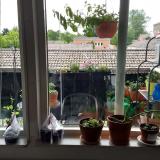
Sometimes you need to go away for a couple of days to realise that the baby plants really are growing.
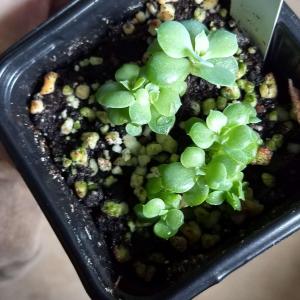

4
0
成长记
KayleeShedd
2017年09月10日

James' son is having some difficulty growing, but I'm not giving up on him! I'll keep watering him until I see some promise! No shame in being a late bloomer!
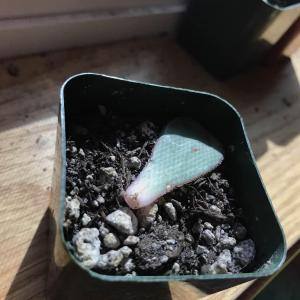

2
0
成长记
KayleeShedd
2017年09月10日

Grace's daughter is actually growing to be a whole new plant! Once she gets too big for this starter planter, I'll put her in a pot next to her mama!
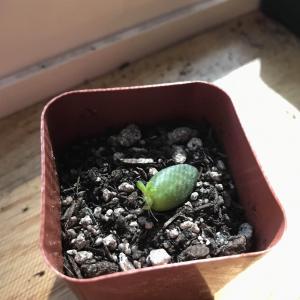

3
0
成长记
KayleeShedd
2017年09月10日

Dannys son is growing some roots! In a few weeks im sure he'll be able to be planted and grow into a big plant!
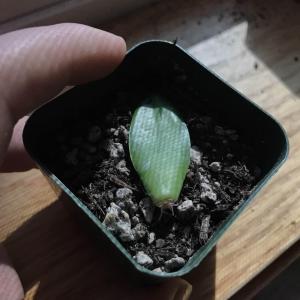

1
0
Succulentsister
2017年09月09日
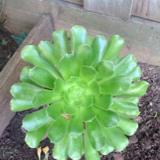
The babies are growing well on this aeonium Holochrysum do you have any tips for me to help them grow or when i take them off the big guy
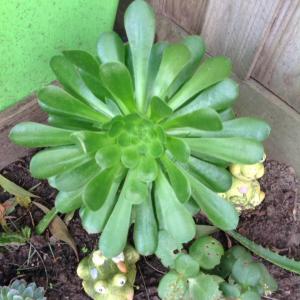
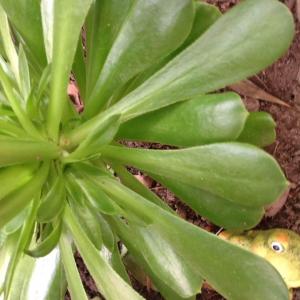


3
0
meriunkat:you'd need to use sharp scissors and let the cutting dry for at least two days before planting so it won't rot, but yeah wait and see when it grows stem
meriunkat:hmm I think it would be more safe to remove the babies when they have a stem😺






